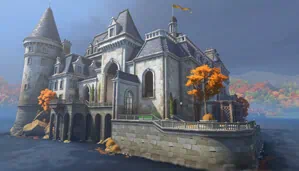FFA MAP attributes (center, size, flatness...) 🗺️
This code is over 6 months old. The code may have expired and might no longer function.

H4S2Q
If this work highly contributes to your one, please consider giving me credit, thank you!
What's this?
In order to create dynamic games, which also take into account the attributes of the map it takes place, you need to get some data somehow. For example "Lava rising", "Base wars"...
So instead of everyone manually set certain things how they feel about certain maps, I present you a better way.
Because we already have a little information about the maps: the spawn points. Those, with some magic, can roughly determine the center of the map, its size, and how "flat" it is.
This also means that this method is independent of time, this will work the same on maps released in the future. Which is a convenient thing, since there is (almost) no need for updates later.
.
Let me remind you that in most cases FFA takes place only in one part of the map, not the whole. When I am talking about "the map", I mean the available playing area!
To be more specific...
First of all, I intruduce you to the Standard Unit of Playing Space. Well, i made this up, but hear me out. If you played the game and worked with the workshop a lot, you start to notice that 30 unit-meter in the overwatch world is a kind of a general boundry for players.
- in a techincal sense: the scaling of the in-world texts, nameplates and healthbars, targeting; vertical space...
- in a practical sense: the attacking beyond this distance is barely attacking, just some kind of ranged cat fight. Aiming has a human limit and it's a shooting game after all.
CENTER
I think this is the most intuitive. Spawn points spread evenly across the maps, so the average for the X, Y, Z components is the center.
SIZE
As we know the center of the map, we can have an insight into how spread out the spawn points are. The further away they are, the bigger the map is. During the game we cannot compare the current map to another one to know what the results mean, so we need to generalize it. Using the SUPS, we get an ergonomic value of the size which is easy to understand and use.
FLATNESS
Well, it's a tricky one. This is derived from the previous calculation about how spread out they are, but only looking at the Y component, in addition, take into account the anomalies among them. The results maybe best described as "how many floors the map has".
Some comments about certain cases:
- Paris is not that flat you say, and you are not wrong. However, the part of the map used for FFA is!
- What's up with Nepal Village? I was as surprised as you are. It's not noticeable when you are playing, but the map is actually on an inclining hill which intensifies the value.
See it yourself
Credit for the thumbnail goes to Nesskain, check out his amazing works as well!



